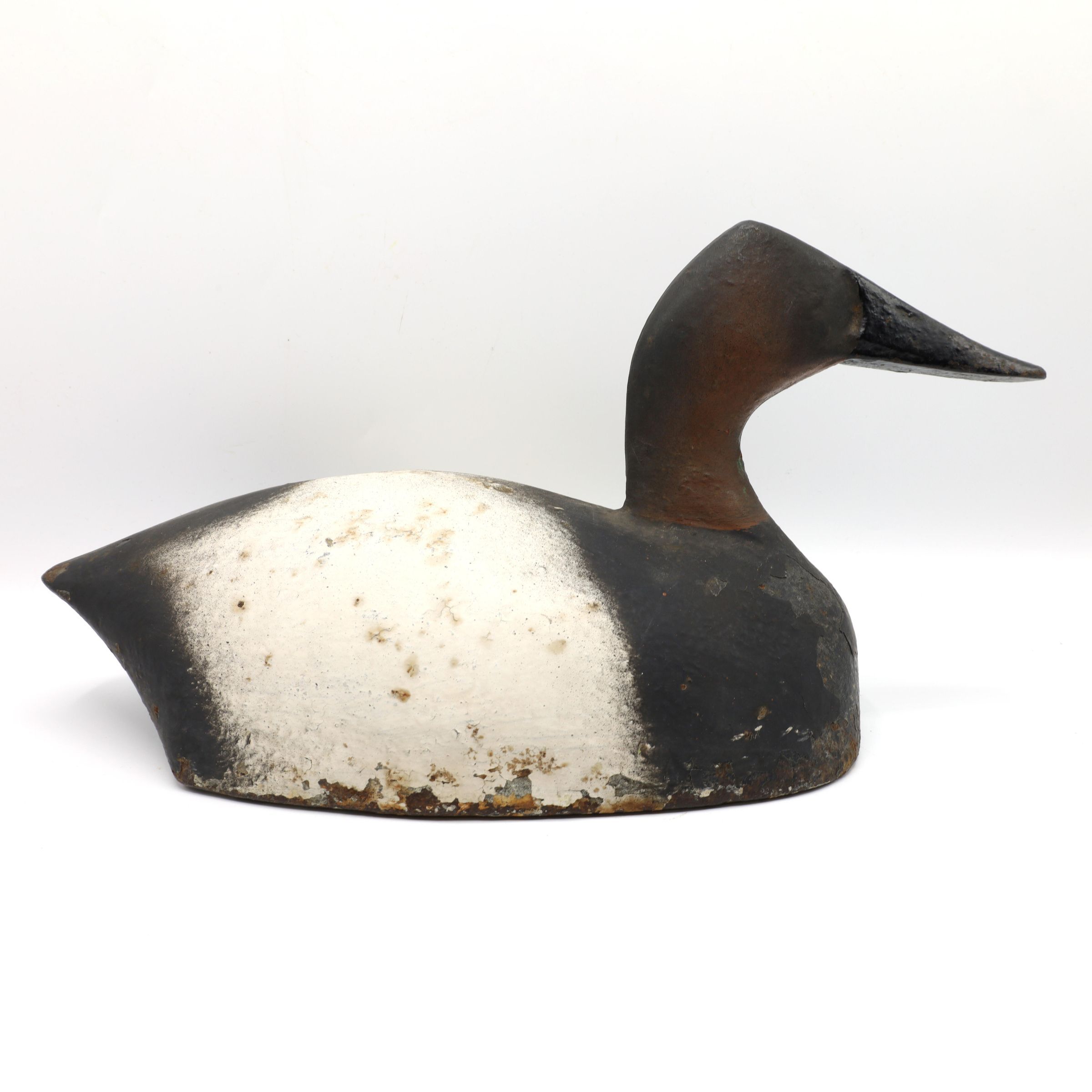Name/Title
Sink Box Decoy, Canvasback (Drake)Entry/Object ID
4.44.128Description
Cast iron decoys such as this Canvasback drake, manufactured in 1920, were used to help weigh down sink boxes. A sink box allowed a hunter to be even with or slightly above the water line, which helped obscure them from the birds they hunted. This type of hunting was especially effective for diving ducks such as the Canvasback. However, it was also incredibly dangerous for the hunter, and using the aptly nicknamed "water coffins" was outlawed in the United States in 1918. Fortunately, Ohio had already banned their use by that time.Use
Used to attract waterfowl for hunting.Context
Duck decoys have a long history in America and can be viewed as a uniquely American art form. Over 2000 years ago, Indigenous people used decoys made of reeds and colored with natural dyes to mimic the waterfowl and lure wary ducks into bow and arrow range. Europeans arriving in America learned the art from the Indigenous people and applied their wood crafting skills to make lifelike wooden decoys.
In the early 1800s, harvesting ducks became an important food source for early immigrants. However, as wetlands were drained for agriculture, duck populations dwindled. Many city dwellers wanting to carry on the tradition of waterfowl hunting traveled long distances to the remaining marshes that rimmed Lake Erie and Sandusky Bay. By 1854, the first hunting club was chartered and protected these areas from continued drainage. The demand for decoys grew, and the manufacturing of wooden decoys started before the turn of the century. Today, most hunters use lightweight plastic decoys.Collection
Magee Marsh Wildlife AreaLocation
Building
Magee Marsh Visitor CenterOhio State Wildlife Area
Magee Marsh Wildlife Area
